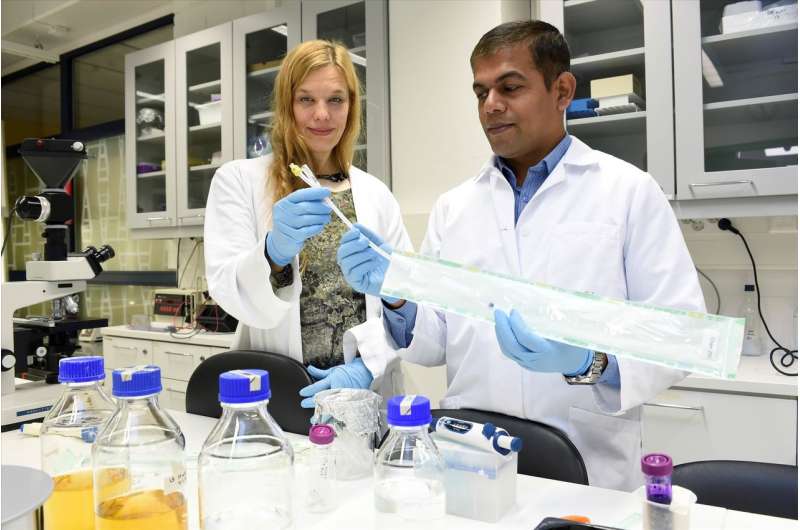Remedy against superbacteria found in crowberry

Researchers in Oulu have found small fragments of an antibacterial protein, also known as peptides, in a microbe living in crowberry. The peptide is able to destroy bacteria that cause infections. Based on the peptide, a protective coating for medical instruments used at hospitals is now being developed as part of the war against the spreading of antibiotic resistance.
Docents Anna Maria Pirttilä and Tejesvi Mysore from the Department of Ecology and Genetics at the University of Oulu optimized the peptide's efficiency. The original purpose was to find medicinally useful compounds from local plant species. The team studied several different species of plants; not only crowberry but also heather and marsh tea. However, the most promising compounds were found in crowberry.
"There is a community of microbes inside the leaves and stem of crowberry. We isolated the genes of the bacteria and tested the ability of the induced compounds to destroy bacteria," says Pirttilä. The researchers found that an amino acid chain or peptide of 11 to 16 amino acids can kill microbes.
Lead peptides were developed during the project in 2015 led by Tejesvi Mysore which also concentrated on commercialization of the peptides.
The first application is an antimicrobial urinary catheter
The researchers have established the startup company Chain Antimicrobials Oy to commercialise their research finding through the development of catheters coated with antimicrobial peptides. More than 6,000 people die of urinary tract infections in Europe each year. Fatal UTIs are most often a consequence of a severe bacterial infection acquired during hospital treatment, originating from long-term catheter use.
In long-term use, a biofilm is formed on the surface of a urinary catheter. This refers to microbial growth that binds tightly with the material. Bacteria growing in biofilms are 10 to 1,000 times more resistant to antibiotics compared to freely growing bacteria, and for this reason, it is difficult to destroy biofilms.
"We are developing a peptide coating for catheters to prevent biofilm formation. The same technology can be subsequently used for other medical instruments where biofilm formation is a problem, such as intubation tubes and various kinds of implants," says Docent Tejesvi Mysore, CEO of Chain Antimicrobials Oy.
Product testing is estimated to take four years.
"However, we will not sell a finished product but a technology. Companies manufacturing medical instruments will buy our technology," says Tejesvi Mysore.
Provided by University of Oulu





















